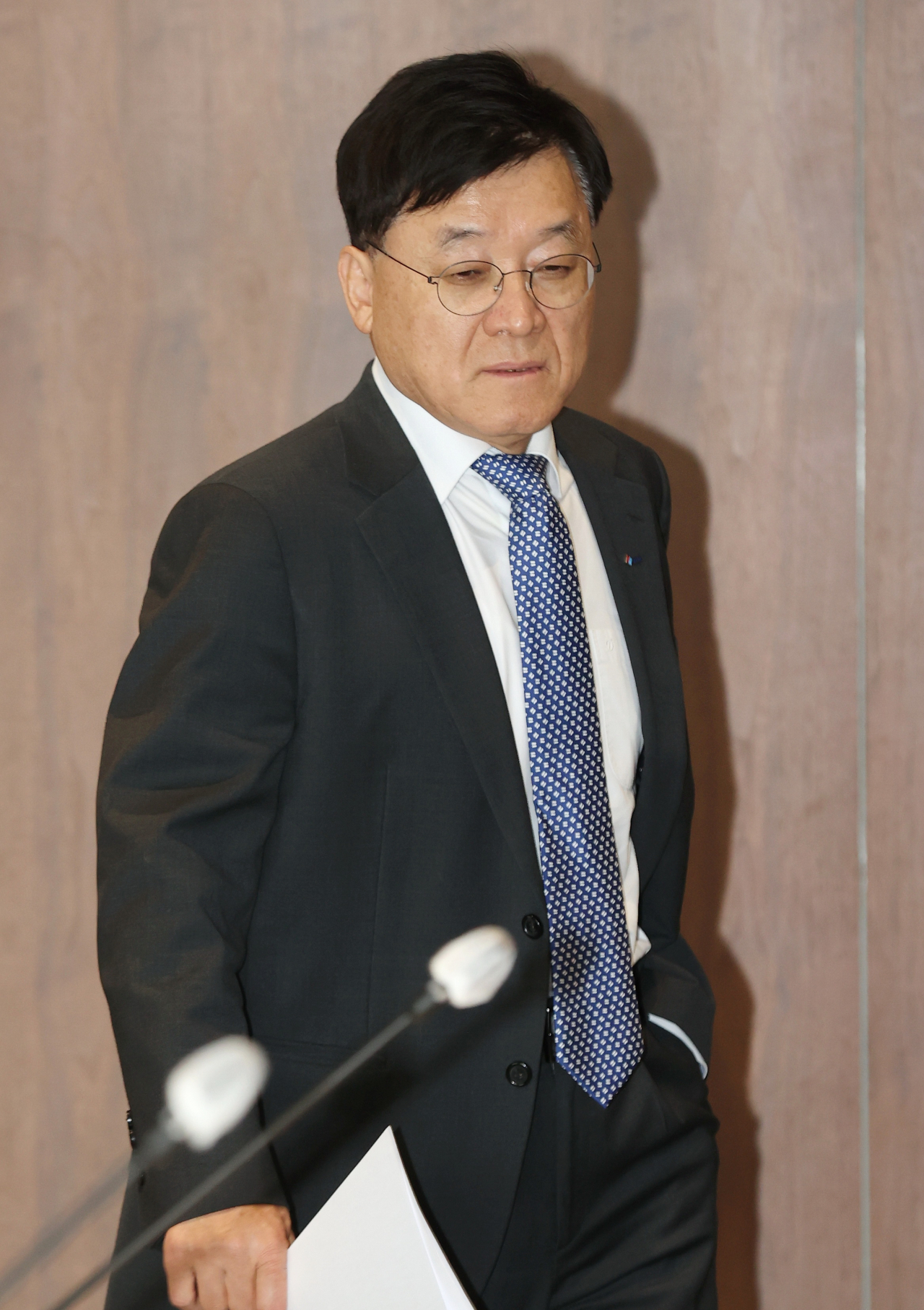 |
Korea International Trade Association Vice Chairman Jeong Marn-ki attends a press conference held in Samseong-dong, Seoul, on Tuesday. (Yonhap) |
The Korean trade lobby group on Tuesday warned that Korea's trade deficit could expand by up to $41 billion by the end of the year in the worst-case scenario.
If South Korea's export slump persists until the end of the year, Korea International Trade Association sees that the annual export volume could fall by up to 8 percent as well.
"While the automotive, shipbuilding and petroleum industries are expected to recover after the second quarter, the semiconductor, computer and display industries are expected to continue to struggle throughout the year,” KITA Vice Chairman Jeong Marn-ki said during a press conference held in Samseong-dong, Seoul, on Tuesday.
He also presented KITA's recent survey results during the press conference.
Local business entities predict that the second quarter export outlook will worsen compared to the first quarter, the survey said.
The firms' second quarter export industry outlook index recorded 90.9, falling below the benchmark (100) for the fifth consecutive quarter.
Although the outlook is not bright, Jeong highlighted that the index has improved slightly compared to the outlook for fourth quarter of last year (84.4) and the first quarter of this year (81.8), due to expectations related to China's reopening.
"If semiconductor prices recover in the second half of the year, and external conditions also improve from China's reopening, exports are expected to decrease by about 3 percent without further decline," Jeong added.
As of March 20, South Korea's exports have fallen by 13.4 percent on-year to $127.4 billion, with a trade deficit of $24.1 billion.
"The proportion of the deficit compared to the trade volume is the highest in 40 years at 8.4 percent. This is higher than the 7.4 percent in 1996, just before the global financial crisis and the 8.2 percent recorded during the second oil shock in 1978," Jeong said.
This decline is largely due to the decrease in exports to China and also a slump in the semiconductor sector.
China's share in total Korean exports has dropped to 19.8 percent.
Also, total semiconductor exports have decreased by 44.7 percent on-year to $4.32 billion, seeing a decline for the eighth consecutive month. The proportion of semiconductor exports also decreased to 12.8 percent, dropping below the 15 percent level for the first time since 2016.
"The semiconductor export price per unit has been declining since April of last year, and the volume also began to decline in January this year," Jeong added.
Meanwhile, after the recent Korea-Japan summit, Jeong expects an increase in trade activity between the two countries.
He explained that while Japan's export restrictions led to a diversification of importing countries and helped foster domestic production, there were also aspects that burdened Korean semiconductor companies.
"Korea, with its strength in memory semiconductors, and Japan, with its technology in semiconductor materials and equipment, will create synergy through cooperation in the semiconductor industry,” he added.







